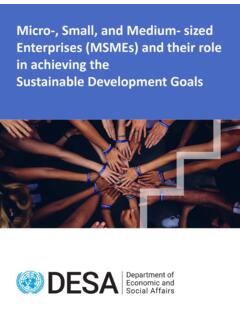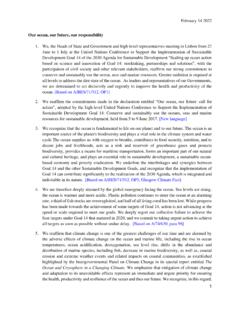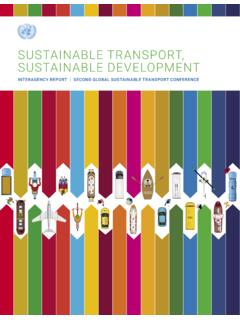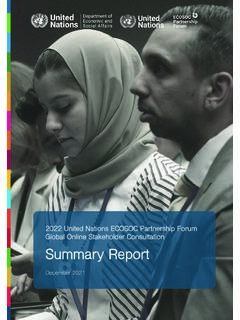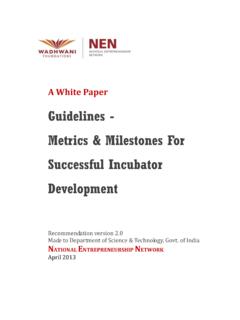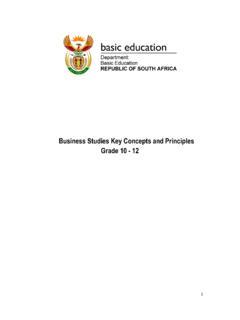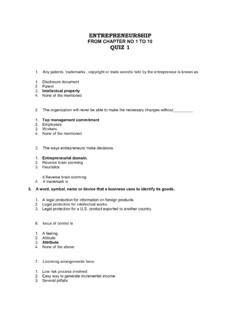Transcription of UNDESA - Exploring Youth Entrepreneurship
1 UNDESA - Exploring Youth Entrepreneurship 1 UNDESA - Exploring Youth Entrepreneurship 2 Exploring Youth Entrepreneurship This paper was prepared under the project supported by the 2030 Agenda for Sustainable Development Sub-Fund of the UN Peace and Development Fund (UNPDF), of which the People s Republic of China is a major contributor. This report was prepared by Professor Diane Holt, consultant, for the United Nations Department of Economic and Social Affairs Division for Sustainable Development Goals. The views expressed in this report are those of the author and do not necessarily reflect those of the United Nations.
2 UNDESA - Exploring Youth Entrepreneurship 3 Table of Contents I. Introduction .. 4 What do we mean by Youth ? .. 5 Youth and the Sustainable Development Goals (SDGs) .. 6 Other importance sources of information on Youth Entrepreneurship .. 8 II. A Focus on Country Perspectives .. 9 Introduction .. 9 Cambodia .. 10 Lao PDR .. 11 The Philippines .. 13 The 15 Fiji .. 18 III. The Importance of Contextualizing Youth Entrepreneurship .. 21 Considering Institutions .. 21 Informality as an Institution .. 23 Considering 25 Intersectionality .. 27 In summary - the importance of context and 27 IV. Providing Enablers and Solutions to Youth Entrepreneurship Challenges.
3 29 Access to financial/capital resources .. 29 Entrepreneurship education, training, and awareness .. 30 Business development support .. 30 Entrepreneurial ecosystems .. 31 Synergies of employment and Entrepreneurship as pathways to the SDGs .. 32 V. Showcasing Examples from Around the World .. 33 VI. Key Considerations for Successful Youth Entrepreneurship .. 39 Appendix 1 .. 40 Bibliography .. 42 UNDESA - Exploring Youth Entrepreneurship 4 The Youth challenge alone is staggering. More than 620 million young people are neither working nor studying. Just to keep employment rates constant, the worldwide number of jobs will have to increase by around 600 million over a 15-year period.
4 World Development Report, ( ) I. Introduction Across the world the creation of micro, small and medium enterprises (MSMEs) are seen as a way to drive economic development and transformative growth, and for some, a route out of absolute and relative poverty. Setting up such new enterprises is considered pivotal in the creation of new jobs to engage the labour force and maintain global employment rates and, in the absence of employment opportunities, to provide the unemployed with livelihood opportunities. Jobs are seen as the cornerstone of development, and are critical in promoting prosperity, fighting poverty and encouraging peace.
5 This challenge is particularly acute amongst young people; those in the transition from childhood to full independence. The World Development Report (2012) also estimates that whilst 3 billion people are working, almost half work in farming, small household enterprises, or in casual or seasonal day labour. In such circumstances incomes are insecure and at subsistence level, leaving more than billion in vulnerable, marginalised employment with non-existent or limited safety nets to weather adverse shocks in the family such as illness or a break in employment. Many of the most vulnerable are young people.
6 This report explores aspects of Youth Entrepreneurship as a mechanism to address development challenges and support the achievement of the 2030 Agenda for Sustainable Development and the Sustainable Development Goals (SDGs). The report objectives are therefore to: Introduce the report Exploring what we mean by Youth , the SDGs and Entrepreneurship ; Set out the position of Youth in a selection of countries (Cambodia, Lao PDR, the Philippines, the Gambia, and Fiji), and briefly introduce some of the main issues/challenges faced by Youth in these countries; Provide vignettes of good practices in other developed and developing countries; Explore the dynamics of Youth Entrepreneurship through an overview of some of the key debates, including the importance of context and the role of the informal economy.
7 And Make key recommendations to guide Youth Entrepreneurship . UNDESA - Exploring Youth Entrepreneurship 5 What do we mean by Youth ? UNESCO2F2 describe Youth as a period of transition from the dependence of childhood to adulthood s independence and awareness of our interdependence as members of a community. Youth is a more fluid category than a fixed age-group. Youth is often indicated as a person between the age where he/she may leave compulsory education, and the age at which he/she finds his/her first employment. This latter age limit has been increasing, as higher levels of unemployment and the cost of setting up an independent household puts many young people into a prolonged period of dependency.
8 The UN, for statistical consistency across regions, defines Youth , as those persons between the ages of 15 and 24 years, without prejudice to other definitions by Member States. For activities at the national level, for example when implementing a local community Youth programme, Youth may be understood in a more flexible manner. UNESCO will then adopt the definition of Youth as used by a particular Member State. It can be based for instance on the definition given in the African Youth Charter where Youth means every person between the ages of 15 and 35 years .3F3 The recent ILO Global Youth Employment Trends 2017 report4F4 notes that Youth unemployment remains high and employment quality a concern, with Youth labour force participation declining sharply in the past 20 years and with an increase in insecure/informal employment.
9 The main findings from the report are quoted below: Between 1997 and 2017, the Youth population grew by 139 million, while the Youth labour force shrank by million people. This dynamic is also reflected in a declining Youth proportion of the overall global labour force, from to The global Youth labour force participation rate has declined in the past 20 years from to Globally, million young people are estimated to be unemployed in 2017. The Youth unemployment rate is globally in 2017 and it is highest in the Arab States, at Across OECD countries, almost 18% of unemployed Youth have been without work for a year or longer.
10 The latest data shows that of working Youth are in informal jobs, compared with of working adults. Youth in informality as a percentage of employed Youth is in developing countries, in emerging countries, and slightly less than 20% in developed countries. Globally, it is estimated that of Youth are NEET (not in education, employment or training); of which are female. In 2017, of working Youth in emerging and developing countries live below the extreme poverty threshold of US$ per day. The bulk of international migrant flows consists of young people around 70% are younger than 30. Between now and 2030, the global Youth labour force will expand by million, driven by trends in Africa; these young people will need jobs.
